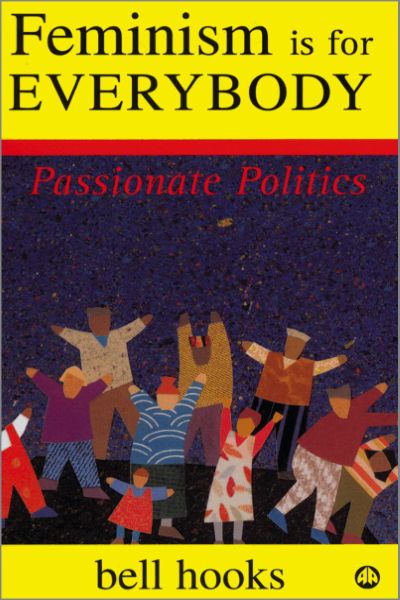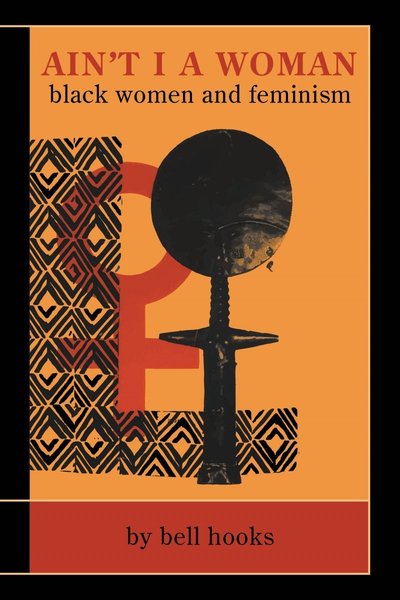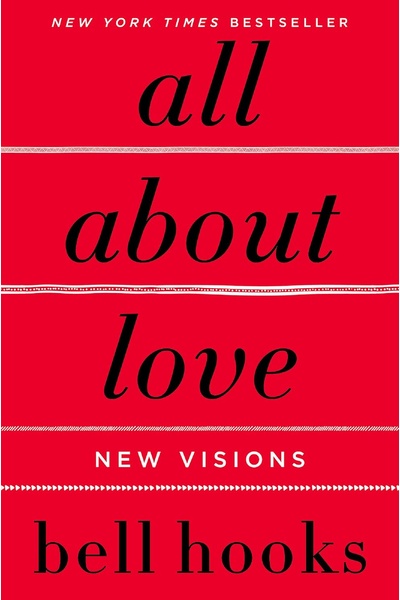Feminism is for Everybody
bell hooks' accessible introduction to feminism that articulates the core concepts of feminist thought in clear, simple language, emphasizing that feminism is not just for women but a political movement to end sexism, sexist exploitation, and sexist oppression that benefits everyone.

📝 Book Review
“Feminism is for Everybody” is an important work published by bell hooks in 2000 that provides readers with an accessible guide to understanding feminism through clear language and profound insights. Compared to hooks’ previous more academic works, this book deliberately adopts an easy-to-understand writing style, aiming to break down the elitist barriers of feminist theory and allow more ordinary people to understand and accept basic feminist concepts.
In this work, hooks clearly points out that feminism is not merely a movement about women but a political movement aimed at ending sexism, sexist exploitation, and sexist oppression—a movement whose ultimate goal is to benefit everyone, regardless of gender. She emphasizes that the core of feminism is not hatred of men or demands for women to dominate men, but creating a society without gender hierarchy where everyone can live equally.
Basic Definition of Feminism
hooks begins the book by clearly presenting her definition of feminism: feminism is a movement to end sexism, sexist exploitation, and sexist oppression. This concise and powerful definition avoids many academic complexities and points directly to feminism’s core goals.
She particularly emphasizes that feminism is not an anti-male movement but an anti-patriarchal system movement. The patriarchal system not only oppresses women but also limits men’s full development. Under patriarchy, men are expected to display dominance, competitiveness, and emotional detachment—expectations that actually damage men’s psychological health and interpersonal relationships.
hooks points out that true feminism is inclusive, welcoming all people who support gender equality regardless of their gender, race, class, or sexual orientation. This inclusivity is key to the feminist movement gaining broad support and achieving success.
The definition hooks provides is deliberately accessible because she believes that complex academic language has been one of the barriers preventing ordinary people from engaging with feminist ideas. By stating feminism’s goals clearly and simply, she opens space for broader participation in feminist politics.
Critique of Elite Feminism
As a theorist long committed to popularizing feminism, hooks provides a deep critique of elite feminism in the book. She points out that when feminism becomes academicized and elitist, it loses its fundamental characteristics as a liberation movement and becomes the exclusive domain of a few privileged women.
hooks particularly criticizes the type of feminism that only focuses on breaking glass ceilings and getting a few women into positions of power. She believes that while this feminism benefits some women, it doesn’t change the overall structure of gender oppression and may even reinforce existing class and racial inequalities.
She emphasizes that true feminism must focus on the circumstances of all women, particularly those at the bottom of society—working-class women, women of color, and poor women. Only when feminism can improve the living conditions of these most marginalized women is it truly revolutionary.
hooks argues that elite feminism often co-opts feminist language and imagery while maintaining systems that benefit only women who already have race and class privilege. This co-optation weakens feminist politics by making it seem as though gender equality has been achieved when structural inequalities remain intact.
The Importance of Intersectional Perspective
Although “Feminism is for Everybody” adopts a popularized writing style, hooks doesn’t simplify complex theoretical issues. She continues to emphasize the importance of intersectional analysis in the book, pointing out that gender oppression is always intertwined with other forms of oppression such as race and class.
hooks explains that a white middle-class woman and a Black working-class woman face different forms of gender oppression and need different solutions. Therefore, the feminist movement must be able to understand and respond to these differences rather than assuming all women have the same experiences and needs.
She particularly emphasizes the impact of racism on the feminist movement. She points out that when the feminist movement ignores racial issues, it actually serves the interests of white women, and this approach alienates women of color and weakens the movement’s power.
hooks’ intersectional approach recognizes that liberation movements must address multiple systems of domination simultaneously. She argues that a feminism that only addresses gender while ignoring race and class will ultimately fail to create meaningful change for most women.
Discussion of Male Participation in Feminism
hooks specifically discusses men’s role in the feminist movement in the book. She believes that men can not only support feminism but should actively participate in feminist movements. She points out that the patriarchal system also harms men, so men have reason to support overthrowing this system.
However, hooks also points out that male participation in feminism requires genuine commitment and self-reflection. Men need to recognize the privileges they enjoy in the patriarchal system, need to be willing to give up these privileges, and need to listen to and learn from women’s experiences.
She particularly emphasizes the important role of fathers in feminist education. She believes that feminist fathers can provide non-patriarchal growth environments for their children—whether boys or girls—which is crucial for cultivating new generations of feminists.
hooks challenges men to move beyond superficial support to genuine solidarity that involves examining their own participation in patriarchal systems and working to change their behavior and attitudes. This requires ongoing education and commitment rather than one-time declarations of support.
The Importance of Feminist Education
Education is an important theme in “Feminism is for Everybody.” hooks believes that feminist education should occur not only in schools but also in families, communities, and throughout society. She emphasizes that changing consciousness is a prerequisite for social change, and consciousness change requires continuous educational efforts.
hooks particularly focuses on children’s feminist education. She believes that cultivating children’s gender equality consciousness from an early age is key to creating a gender-equal society. This includes educating boys to respect women, educating girls to believe in their abilities, and providing all children with growth environments unrestricted by gender stereotypes.
She also emphasizes the importance of critical thinking in feminist education. She believes that feminist education is not about indoctrinating a particular ideology but about cultivating people’s ability to question the status quo and think about alternatives.
hooks argues that feminist education must be an ongoing process that reaches people at all stages of life. She emphasizes the importance of popular education approaches that make feminist ideas accessible to people regardless of their formal educational background.
Feminism and Daily Life
hooks devotes considerable space in the book to discussing how feminism applies to daily life. She believes that feminism should not only be abstract theory but practical principles guiding people’s daily behavior.
She discusses the application of feminism in intimate relationships, emphasizing the importance of equality, respect, and communication. She points out that feminist relationships are not conflict-free relationships but relationships that can handle conflict in constructive ways.
In the workplace, hooks emphasizes the importance of collective action. She believes that while individual success is worth celebrating, it cannot replace systematic change. Women need to unite to collectively challenge workplace sexism.
hooks also addresses how feminist principles can guide decisions about everything from child-rearing to consumer choices, showing that feminism is not a separate sphere of life but a comprehensive approach to living with integrity and justice.
Critique of Consumer Culture
hooks provides a deep critique of consumer culture in the book. She points out that consumer culture actually reinforces gender inequality by shaping women as consumers. Advertising and media constantly tell women they need to purchase specific products to achieve beauty, success, and happiness.
She believes that true feminism must challenge this consumer logic. Women’s value should not be defined by what they buy or own but by their character, abilities, and contributions.
hooks also criticizes the tendency to commodify feminism. She points out that when feminism becomes something that can be purchased as an identity marker, it loses its power as a political movement.
Her critique extends to the ways that corporate feminism appropriates feminist language and imagery for marketing purposes while maintaining exploitative labor practices and reinforcing gender stereotypes. She argues for a feminism that challenges rather than accommodates capitalist values.
Future Vision of Feminism
In the book’s concluding section, hooks presents a vision for feminism’s future. She imagines a truly gender-equal society where people are not restricted or discriminated against because of gender, where everyone can fully develop their potential, and where violence and domination are replaced by cooperation and care.
She emphasizes that realizing this vision requires everyone’s participation. Feminism cannot rely only on women to advance it; it needs men’s support and participation from different racial, class, and age groups.
hooks also emphasizes the importance of hope. She believes that although gender inequality still exists widely, progress is possible. Each generation can do better than the previous one, and everyone can contribute to creating a more equal world.
Her vision is both radical and practical, calling for fundamental transformation while providing concrete steps that individuals and communities can take to move toward greater equality and justice.
Contemporary Insights
“Feminism is for Everybody” was published in 2000, but its viewpoints remain significant today. In contemporary issues like the #MeToo movement, gender wage gap discussions, and transgender rights controversies, hooks’ analytical framework still applies.
Her emphasis on inclusive feminism is particularly important today. As people’s understanding of gender and identity deepens, the feminist movement needs to continue expanding its inclusivity to welcome all people who support gender equality.
hooks’ emphasis on education is particularly relevant in the digital age. Social media and the internet provide new platforms for spreading feminist ideas but also bring new challenges such as misinformation and opinion polarization.
The book’s insights about the relationship between individual and systemic change remain crucial as contemporary movements grapple with how to create lasting transformation rather than temporary gains.
Global Impact and Accessibility
One of the book’s greatest strengths is its accessibility. hooks deliberately wrote in plain language that could be understood by people regardless of their educational background or previous exposure to feminist theory. This approach has made the book valuable for grassroots organizing and popular education around the world.
The book has been translated into multiple languages and used in various educational and organizing contexts globally. Its emphasis on the universal benefits of feminism has helped counter anti-feminist arguments that portray feminism as divisive or exclusively focused on women’s interests.
hooks’ global perspective recognizes that while the specific manifestations of patriarchy vary across cultures, the fundamental goal of ending sexist oppression is relevant everywhere. This universalist approach, combined with her intersectional analysis, provides a framework for understanding both commonalities and differences in women’s experiences worldwide.
Relationship to hooks’ Broader Work
“Feminism is for Everybody” serves as an accessible entry point to hooks’ broader body of work while also standing alone as a comprehensive introduction to feminist thought. The book synthesizes insights from her earlier academic works while maintaining the focus on practical application that characterizes her approach to theory.
The book reflects hooks’ commitment to what she calls “theory as liberatory practice”—the idea that theoretical understanding should serve the goal of liberation rather than remaining abstract academic exercise. This approach makes feminist theory relevant to people’s daily lives and struggles.
hooks’ emphasis on love as a political force, which appears throughout her work, is present in this book’s vision of feminism as a movement that benefits everyone. She argues that feminist politics, properly understood, is about creating conditions for authentic love and care to flourish.
Pedagogy and Methodology
The book itself exemplifies hooks’ pedagogical approach, which emphasizes dialogue, accessibility, and the connection between personal experience and political analysis. She uses examples from her own life and the lives of others to illustrate abstract concepts, making theory concrete and relatable.
hooks’ methodology involves meeting people where they are rather than requiring them to master academic language before engaging with feminist ideas. This approach has made her work particularly valuable for community organizing and popular education efforts.
The book’s structure, moving from basic definitions to more complex applications, reflects hooks’ understanding of how people learn and change. She provides readers with tools they can immediately apply while also challenging them to think more deeply about the systems that shape their lives.
Conclusion
“Feminism is for Everybody” is an important feminist introductory reading that successfully transforms complex theoretical issues into practical guides that ordinary people can understand and apply. The inclusivity, practicality, and optimistic spirit that hooks demonstrates in this work make important contributions to the popularization of the feminist movement.
This book reminds us that feminism is not the exclusive domain of a few but a common cause for all who pursue equality and justice. Through education, dialogue, and collective action, we can create a more just and equal world. In this process, everyone has their own role, and everyone can become a driver of change.
hooks’ vision of feminism as a movement for everyone offers hope in an era when political movements often seem divided and exclusive. By articulating a feminism that benefits all people while centering the experiences of the most marginalized, she provides a model for building broad-based movements for social justice.
The book’s enduring relevance lies in its recognition that feminist politics, properly understood, is not about women versus men but about creating social conditions that allow all people to thrive. This vision remains as necessary and inspiring today as it was when hooks first articulated it, offering guidance for contemporary movements seeking to create meaningful and lasting change.
Discussion
读书讨论
分享您对这本书的感想和看法,与其他读者交流见解
加入讨论
分享您对这本书的感想和看法,与其他读者交流见解
加载评论中...
Book Info
Related Topics
🛒 Get This Book
 Buy on Amazon
Buy on Amazon Related Books
读书讨论
分享您对这本书的感想和看法,与其他读者交流见解
加入讨论
分享您对这本书的感想和看法,与其他读者交流见解
加载评论中...

